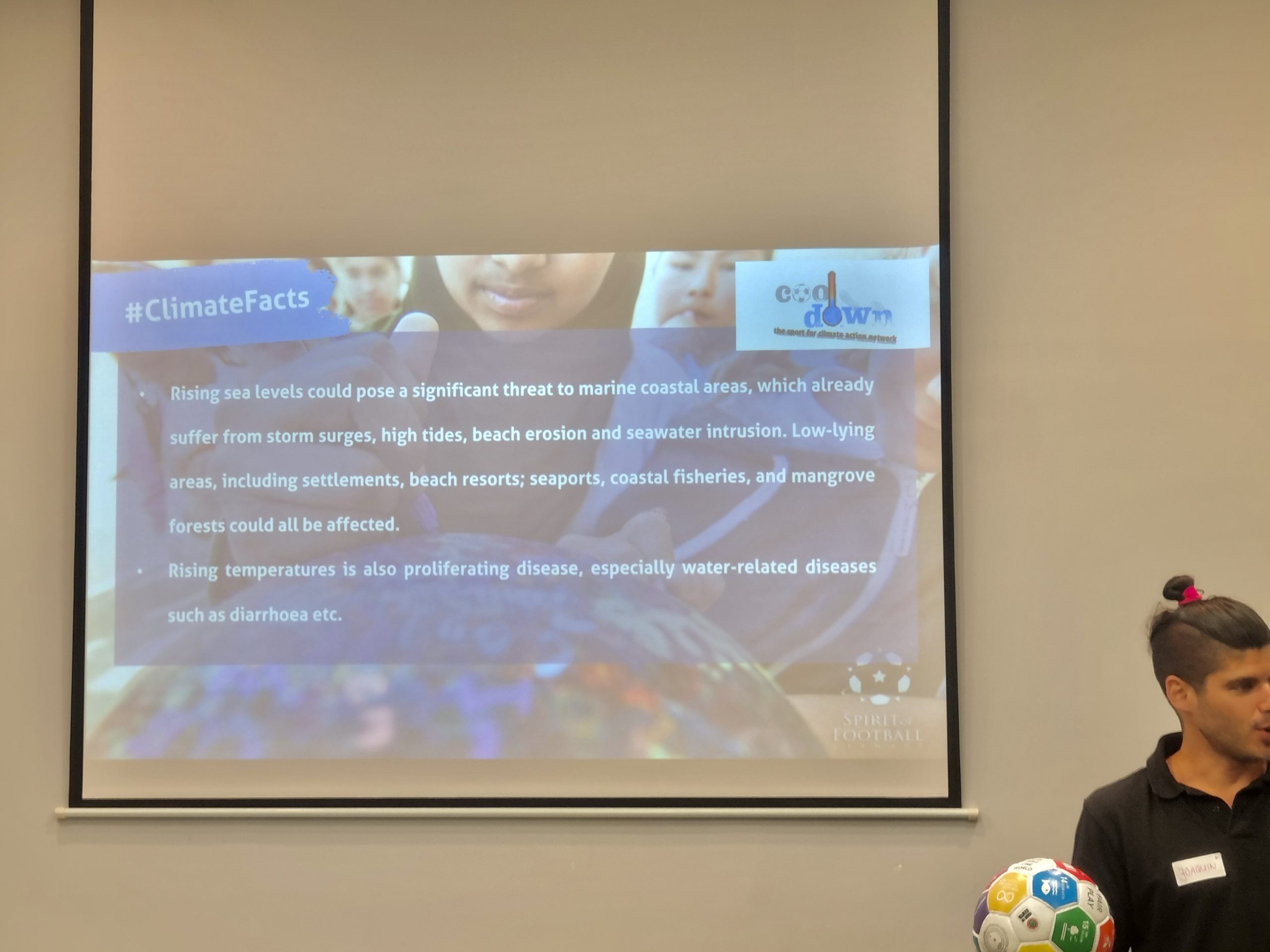Thanks again to Freddie from the Cool Down Sport for Climate Action Network for supplying us with the following climate facts for Cambodia. We were able to integrate them once again into conversations with people and as seen in the image below, into our workshops too:
Here are some top lines regarding climate, mitigation, and adaptation in Cambodia:
- Cambodia is one of more “vulnerable” nations in Southeast Asia when it comes to climate impacts. Droughts and floods are a yearly occurrence, which will continue to hold back their economic development without government policy and international climate finance.
- In 2021, just over 75% of the Cambodian population lived in rural areas – this means that drought and floods severely impact most of the population’s ability to work and feed themselves. Creating climate-resilient agriculture is essential – and the government has introduced some legislation to help with this.
- Deforestation continues to be a huge issue in Cambodia. In 2021, it lost 141,000 hectares of natural forest, releasing the equivalent of 83.2Mt of CO₂ emissions. The country has lost around 64% of its tree cover since 2011 (!) – radical changes are needed to halt this.
- Flooding is also a big risk as much of the Cambodian population lives along the banks of the Mekong, whose levels fluctuate wildly. Estimates vary, but the vast majority of the population lives in proximity to Cambodia’s great rivers and lakes. Rising temperatures may also change water systems, which could have significant impacts on agriculture, fishing etc.
- Rising sea levels could pose a significant threat to marine coastal areas, which already suffer from storm surges, high tides, beach erosion and seawater intrusion. Low-lying areas, including settlements, beach resorts; seaports, coastal fisheries, and mangrove forests could all be affected.
- Rising temperatures is also proliferating disease, especially water-related diseases such as diarrhoea etc.

